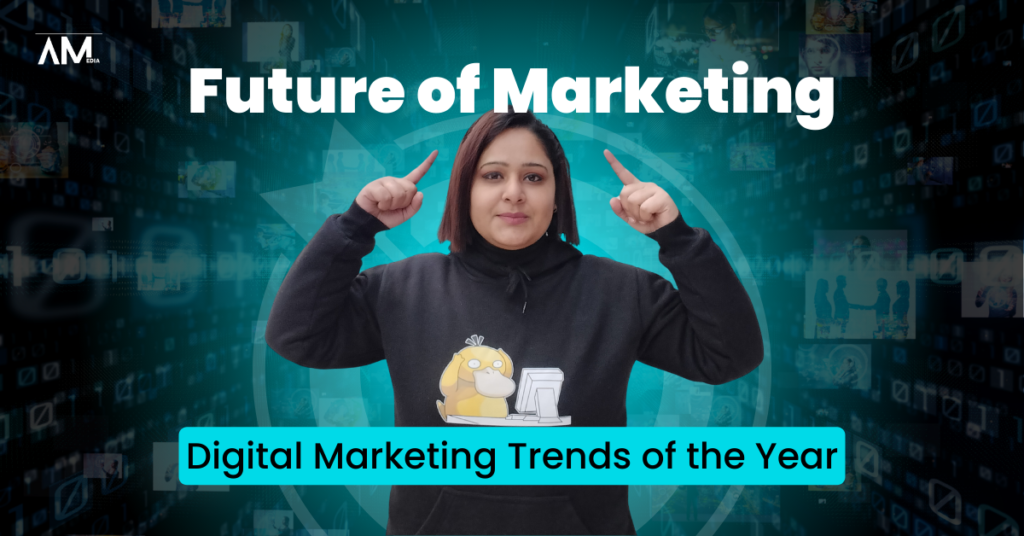The world is evolving at an unprecedented pace, and so is the marketing arena. In this blog, we will provide you with expert insights, projections, and data that are crucial for you not just to keep up but also to stay ahead in the marketing game.
Intergenerational Marketing
Over the next 10 years, the world will witness tremendous demographic change. According to Our World in Data, “the population of people ageing 40% will increase and will contribute a major role to the entire population.”
What’s truly exciting for businesses to understand is that the ageing population, with its soon-to-be significant portion of the consumer base and considerable spending power, presents a wealth of untapped potential.
Yet, it’s crucial to recognize that most consumer brands currently treat the older population as an afterthought. The shifting demographic landscape demands a more age-inclusive approach, and this change needs to happen now.
Because I rarely see an older man in a car commercial or a 50+ woman in a cosmetic brand ad. If you know of any such brands, please mention them in the comment section.
Marketers have the power to bridge these perceived generational gaps and create a more inclusive marketing landscape.
The biggest challenge that marketers face in the above-presented scenario is that right now, businesses and marketers see different age groups as different generations. This was fair enough in 1970 when businesses were catering to two extremely different age groups: the World War 2 generation and the baby boomers.
However, millennials and Gen Z don’t differ much in terms of the world they experience. In addition, they have access to the same media and resources, which is not true of the World War 2 generation and the baby boomers.
Still, businesses see millennials and Gen-Z as two completely different generations with unique traits and tastes.
Marketers and business leaders need to realize that this generational gap is imaginary, and the traits and tastes that overlap for these two generations are far more than they can imagine.
What Brands Should Do
To adapt to these changes, brands need to adopt a more inclusive approach:
- Shift the Narrative: View consumers as individuals rather than as part of a generational cohort.
- Lifestyle Over Age: Recognize that people’s lifestyles are not dictated by their age.
- Leverage Data: Utilize real-time data to gain insights into individual consumer behavior.
- Encourage Inter-Generational Influencing: Acknowledge and utilize the influence that different generations have on each other.
- Find Common Ground: Focus on creating messages and products that resonate across age groups.
- Plan for Longevity: Design products and services that remain relevant as consumers age.
Beyond Age Neutrality
Brands that succeed will be those that transcend age neutrality and engage with consumers on a more personal and intergenerational level. Examples of brands already moving in this direction include Mercedes-Benz, Nike, and Progressive Insurance, which have crafted campaigns that resonate across age groups, blending humor with uplifting messages.
The future of marketing lies in embracing a “post-generational” perspective. The focus should be on individual preferences and behaviours rather than on arbitrary age groups. This approach not only aligns with the evolving demographic landscape but also resonates with consumers’ desire for personalization and inclusivity.
Social Shopping- Social Media As Your Store Front
According to Accenture, “Shopping on social media platforms is expected to reach $1.2 trillion globally by 2025.”
Social media can help businesses in gaining a better understanding of customers.
Not only this, but social media also influences 71% of consumer buying decisions. Shoppers are 29 percent more likely to make a purchase the same day when they use social media to help shop either before or during their trip (90 per cent vs. 70 per cent conversion).
Consumers who use social media during their shopping process are ≈4x more likely than non-users to spend more or significantly more on purchases as a result of a digital shopping experience.
Respondents who consider themselves somewhat or very influenced by social media are 6x more likely to spend significantly more than non-users (42% vs. 7%) due to their digital shopping experiences.
75% of consumers said product information found on social channels influenced their shopping behaviour and enhanced brand loyalty
Even after this clear impact of social media on consumers and business growth, most small businesses mess up their social media marketing for different reasons, including the wrong choice of platform, uninformed strategies, and poor execution.
Therefore, you must start your social media marketing by selecting the right platform that will support your business. You must choose the social media platform with the maximum number of people from your ideal customer avatar.
Below, you will find a graphical representation of the percentage of users on different social media channels by age.
The data shown in the above figure is the result of a survey conducted by Statistica in September 2023. The breakdown is given below:
- 18-29 years – Snapchat (41%), TikTok (35%), Instagram (32%)
- 30-39 years – LinkedIn (34%), X/Twitter (34%), Snapchat (33%), Instagram (32%)
- 40-49 years – LinkedIn (25%), Facebook (22%), X/Twitter (21%)
- 50-59 years – Facebook (29%), LinkedIn (24%), Pinterest (24%)
Generational impact on social commerce
Millennials currently dominate the social commerce landscape, but Gen Z’s growing purchasing power is not to be underestimated. This generation, known for its digital nativism, heavily relies on social media for shopping inspiration and is expected to maintain its online presence, continually exposed to personalized advertisements from favoured influencers.
Considering the impact of millennials and Gen Z on the future market, brands and businesses must focus their social media marketing on them.
The driving forces behind social commerce growth
The “creator economy,” driven by influencers and creators, plays a pivotal role in this expansion.
Influencers leverage their influence to promote and sell products to their vast audiences.
The relationship between influencers and their followers is crucial for converting engagement into sales. Influencers’ content not only entertains but also persuades their audience to make purchases, and some earn substantial amounts per post.
Social media users are highly receptive to influencers’ marketing strategies, with a notable portion of consumers admitting that influencers sway their purchasing choices. This influence is particularly strong in certain markets, including Brazil, where social media usage and influencer followings are high.
Opportunities within the social commerce ecosystem
The evolving social commerce ecosystem presents numerous opportunities for brands, platforms, and developers. Success in this realm requires understanding which product categories are best suited for social commerce and keeping abreast of shifts in consumer behaviour and preferences. Engaging an inclusive range of influencers who resonate with the target audience can be key to unlocking social commerce’s potential.
Furthermore, social media platforms can enhance their value proposition by offering innovative shopping experiences, such as Livestream events and augmented reality try-ons, capitalizing on the infrastructure that supports integrated shopping and payment experiences.
As social commerce continues to evolve, it is set to redefine the digital shopping landscape, making a wide array of digital experiences “shoppable.” This trend is expected to extend beyond social media, integrating e-commerce functionalities into various online services, and streamlining the path from discovery to purchase.
Why marketers need to focus on social media to grow sales
Marketers should prioritize social media for several compelling reasons:
- Vast and growing audience: With billions of active users, social media platforms offer unparalleled access to potential customers.
- Influence of creators: Influencers and creators have the power to shape consumer preferences and drive sales, making them valuable partners for brands.
- Integration of commerce and content: Social commerce enables a seamless blend of engaging content and e-commerce functionalities, enhancing the shopping experience.
- Generational trends: The significant spending power of Millennials and Gen Z, combined with their preference for shopping on social media, underscores the importance of these platforms for future sales growth.
- Innovative shopping experiences: Continuously introducing novel shopping features, such as livestream shopping and AR try-ons, keeps consumers engaged and opens new avenues for sales.
By leveraging the unique opportunities presented by social commerce, marketers can tap into a dynamic and rapidly expanding market, driving sales and fostering brand loyalty among a diverse and engaged audience.
Conclusion:
In conclusion, the future of marketing lies in the strategic integration of intergenerational marketing and social commerce, both of which are pivotal for businesses seeking to thrive in a rapidly evolving landscape. The demographic shift towards an ageing population and the increasing influence of younger generations on the digital front present unique opportunities for brands to adopt a more inclusive and nuanced approach to their marketing strategies. By recognizing the importance of catering to a broad spectrum of consumers, regardless of age, and leveraging the power of social media as a dynamic storefront, businesses can create more resonant and effective marketing campaigns.
The intertwining of these two trends underscores the importance of a more personalized and intergenerational marketing approach. Brands that can effectively bridge the gap between different age groups while harnessing the immense potential of social commerce are poised to not only capture a diverse consumer base but also foster deeper connections and loyalty among them. This dual focus not only aligns with the evolving demographic and digital landscapes but also meets the modern consumer’s demand for personalization, inclusivity, and convenience in their shopping experiences.
As we move forward, the synergy between understanding and embracing the demographic diversity of the consumer base, coupled with the innovative use of social media platforms for commerce, will be the cornerstone of successful marketing strategies. The brands that excel in this environment will be those that look beyond conventional demographic segments, engage with consumers on a more personal level across generations, and leverage the digital realm to create seamless, engaging, and enriching shopping experiences.
Editor’s Choice:
A Decade Of Digital Disruption: The Evolution Of Marketing In The Digital Age & Future Trends
Is Your Website Isn’t Converting?: Know The Secret Sauce Of Growth-Driven Design And More
Crafting With Caution: AI And The Art Of Balanced Content Creation
Customer Experience Evolution: From 2015 Insights To 2023 Realities
The L.O.V.E. 4-Step Email Copywriting Framework: Connections, Trust & Conversion
Role Of Chatbots In Customer Service: Enhancing User Experience






